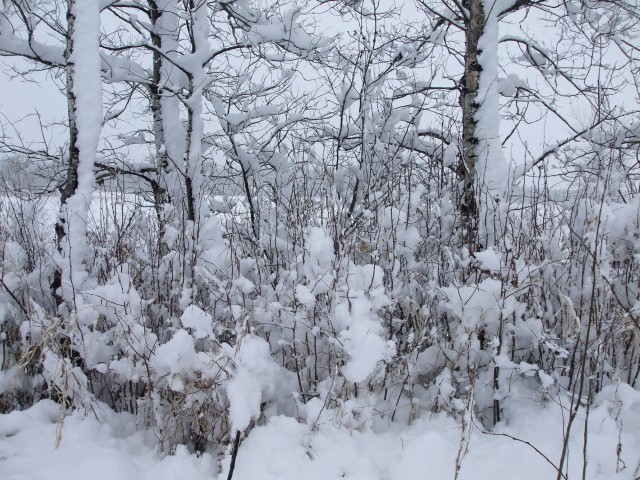
Extreme cold weather is a dangerous situation that can bring on health emergencies in susceptible people, such as those without shelter, outdoor workers, and those who work in areas that are poorly insulated or without heat. What constitutes cold stress and its effects can vary across different areas of the country.
Cold weather and snow conditions provide opportunities for outdoor snow sports and activities. For those born and raised in warm climates, winter can pose challenges. According to research, persons that live in warmer climates are more prone to cold weather injuries. Frost bite is common among Soldiers and other outdoor workers such as our Arlington National Cemetery and Department of Public Works staff.
Let us review four common cold weather injuries: chilblain, frost bite, hypothermia, and trench foot.
Chilblain is a medical condition often confused with frostbite and trench foot. Chilblains are ulcers affecting the extremities that occur when a predisposed individual is exposed to cold and humidity. The cold exposure damages capillary beds in the skin, which in turn can cause redness, itching, blisters, and swelling. Chilblains are often unknown in origin, but can be manifestations of serious medical conditions that need to be investigated. They can be prevented by keeping the feet and hands warm in cold weather. A history of chilblains is suggestive of a connective tissue disease. Prevention includes the use of gloves to handle all equipment. Never use your bare hands. Use approved gloves to handle all fuel and petroleum, oil and lubricants as well. In extreme cold environments, do not remove clothing immediately after heavy exertion like physical training. Wait until you are in a warmer location. Avoid cotton clothing, which holds perspiration, in cold-weather environments.
Trench foot, also known as immersion foot, occurs when the feet are wet for long periods of time. It can be quite painful, but is preventable and treatable. Symptoms of trench foot include a tingling or itching sensation, pain, swelling, cold and blotchy skin, numbness, and a prickling or heavy feeling in the foot. The foot may be red, dry, and painful after it becomes warm and blisters may form, followed by skin and tissue dying and falling off. In severe cases untreated trench foot can involve the toes, heels, or the entire foot.
Trench foot can be prevented by allowing feet to air dry, elevating your feet, and exchanging wet shoes and socks for dry ones. If you have foot wounds your feet may be more prone to infection. Check your feet at least once a day for infections or worsening of symptoms. Treatment for trench foot includes taking the following steps: thoroughly clean and dry your feet; put on clean, dry socks daily; treat the affected part by applying warm packs or soaking in warm water (102-110 degrees Fahrenheit) for approximately five minutes; when sleeping or resting, do not wear socks.
Frostbite is the medical condition where localized damage is caused to skin and other tissues due to extreme cold. Frostbite is most likely to happen in body parts farthest from your heart and those with large exposed areas. The initial stages of frostbite are sometimes referred to as frostnip. The hands and feet are the most commonly affected, but the nose, ears, cheeks and eyes can be affected as well. Symptoms are cold and firm tissue. You may feel tingling and numbness and notice pale and waxy skin with swelling. Never try to re-warm the area until you know that you are out of harms way. Treatment involves putting the frostbitten tissue into lukewarm water. Prevention is the same as for Chilblains; it includes the use of approved gloves to handle all fuel, petroleum, oil and lubricants and avoiding cotton clothing. It also includes keeping your face and ears covered and dry, keeping your socks clean and dry, and avoiding tight socks and boots.
Hypothermia is a life-threatening condition occurring when a persons body temperature goes below 95 degrees Fahrenheit due to exposure to cold and wet conditions. Your body temperature is usually maintained near a constant level of 36.5 to 37.5 degrees Centigrade (98 to 100 degrees Fahrenheit) through biologic homeostasis or thermoregulation. If exposed to cold and internal body mechanisms are unable to replenish heat being lost, a drop in core temperature occurs. As body temperature decreases, one will start shivering, feel drowsy, may get confused, and even die. Prolonged exposure to the cold is a common cause but may even occur at temperatures above freezing, especially when your skin or clothing is wet. Once a person is suffering from hypothermia, he or she must be removed from the outdoors with medical intervention required.
Hypothermia prevention includes avoiding cotton clothing in cold-weather environments and anticipating the need for warming areas for Soldiers exposed to cold conditions.
For the military environment, leaders and their military units must understand that prevention of cold injuries is vital to sustaining combat power. In cold environments, leaders must continually be aware of the condition of their people and be especially alert for signs and symptoms of cold weather injuries. Prevention, early detection, and immediate evacuation are the leader initiatives through which cold injuries should be managed in the field. A simple acronym Soldiers use to remember how to prevent cold weather injuries in the field is COLD: Keep it CLEAN, OVOID (avoid) overheating, wear LOOSE clothing in LAYERS, keep it DRY.
(Information compiled by Lt. Col. Stacy Weina, deputy director of Rader Clinic, and Dr. Randy Abrams from material provided by the Department of the Armys Office of the Surgeon General, the Centers for Disease Control and Prevention and the National Institute for Occupational Safety and Health Education.)

Social Sharing